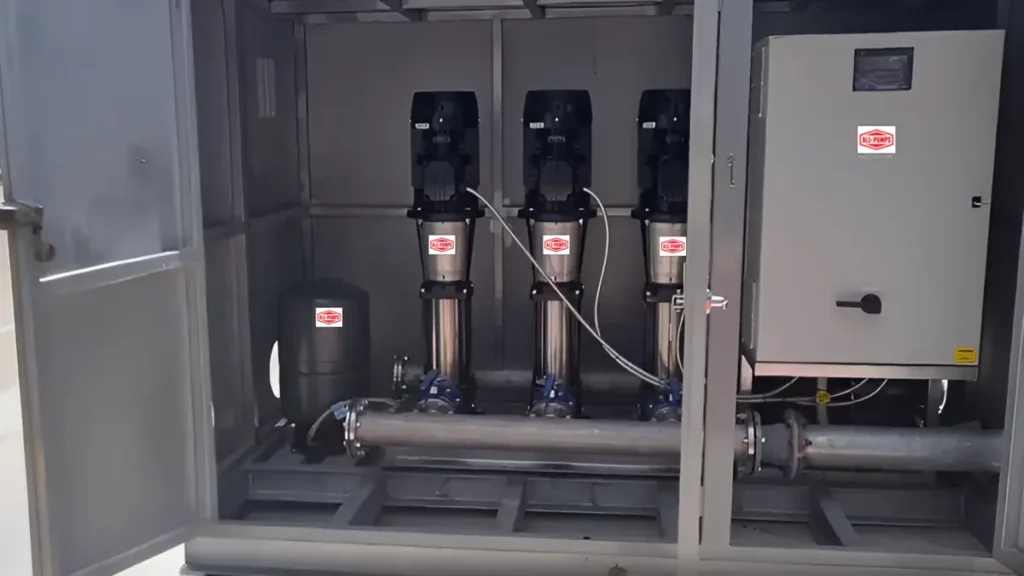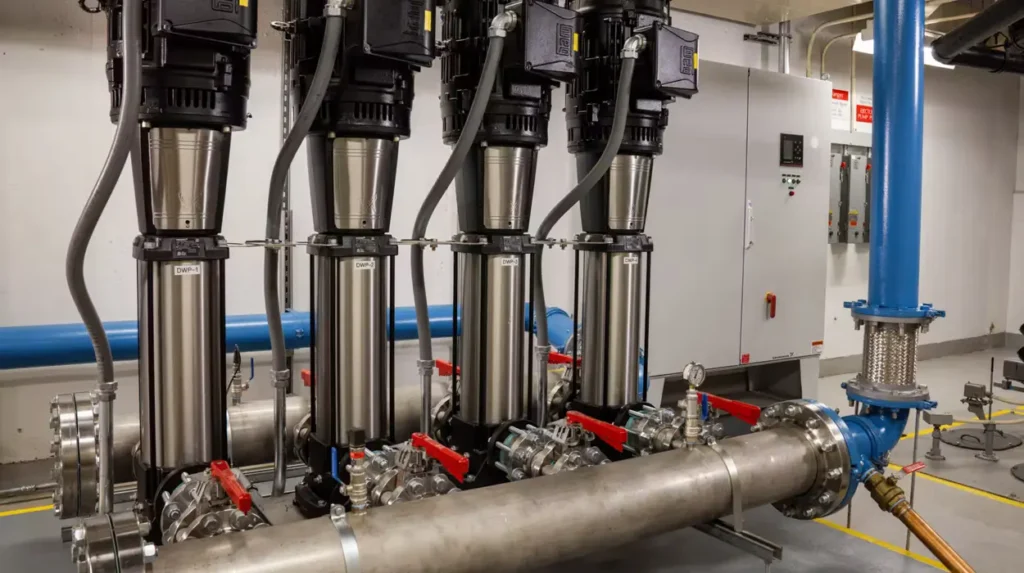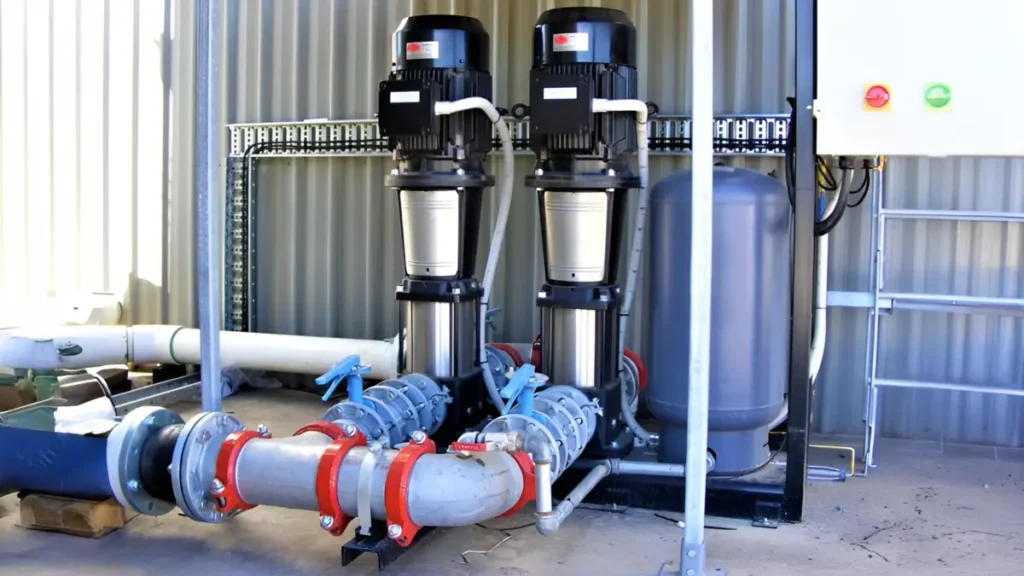
If your submersible well pump is frequently turning on and off or struggling to draw water, it may be due to low pressure in your well tank. This can lead to pump damage, reduced water pressure in your home, and potential tank failure. To prevent further issues, drain the tank and inspect the system as soon as possible.
Well Pressure Tank System: Components and How it Works
Pressure tanks are crucial in well systems, ensuring a reliable water supply and preventing the well pump from short-cycling. They use compressed air to regulate water pressure, as wells do not naturally generate positive pressure.
In these systems, water is stored in a tank with an air chamber, separated by either a rubber diaphragm or a balloon-shaped air bladder. As water enters, the air chamber compresses, creating pressure. A pressure switch regulates the pump, activating it when the tank reaches the pre-set cut-on and cut-off pressure levels.
Understanding Well Pump Short-Cycling

Submersible well pumps are water-cooled. However, frequent cycling can cause excessive electrical current, leading to motor overheating. Given the cost and complexity of replacing these pumps, preventative maintenance of the well pressure tank is essential to protect the pump. Well tanks not only help maintain consistent water pressure in households but also reduce rapid cycling, extending the lifespan of the pump.
Pre-Setting Well Tank Pressure
Well tanks are available with various pressure settings, with 30/50 psi being the most common. This means the well pump activates at 30 psi (2 bar) and shuts off at 50 psi (3.4 bar). For optimal performance, the pressure in the well tank should be set 2 psi (0.14 bar) below the pressure switch’s cut-on point. Therefore, for a 30/50 psi switch, the tank pressure should be adjusted to 28 psi (1.9 bar). Similarly, for a 40/60 psi (2.8/4.1 bar) switch, the correct setting would be 38 psi (2.6 bar).
It is important to maintain a minimum separation of 20 psi (1.4 bar) between the cut-on and cut-off pressures for all pressure switches. If the pressure gap is too wide, the well pump may short-cycle, causing pressure drops and activating the pump even with minimal water use. Conversely, if the cut-on pressure is too close to the cut-off pressure, the tank may not store enough water to meet household demand. This could cause the pump to turn off before the tank is adequately filled, potentially leading to water shortages.
How to Check Well Tank Pressure

Most pressure switches display the well tank's pressure settings. If you’re unsure of your switch settings, you can determine them easily by following these steps:
- Wait until the well tank is full.
- Turn on a tap to allow water to flow from the tank. As the water is released, the pressure in the tank will gradually decrease.
- Observe the pressure switch until your submersible well pump activates. If the pump turns on at 2 bar, your tank is likely set to a 2/3.4 bar pressure setting. If it activates at 2.8 bar, your pressure switch is set to 2.8/4.1.
- To confirm, turn off the tap and wait for the well pump to shut off. Check the pressure switch to see at what pressure the pump turns off, which indicates the cut-off pressure of the tank.
Common Cause of Well Tank Failure
If water leaks from the air valve or Schrader valve, it may indicate a ruptured bladder. A failed bladder cannot be repaired and requires tank replacement to protect the pump and restore the water supply. Even if the tank appears to function temporarily, it will eventually fail to draw water properly, leading to rapid pump cycling and shorter drawdown cycles.
To prevent bladder damage, minimise frequent pump cycling by ensuring the pressure tank is correctly sized. An undersized tank or incorrect pressure settings can lead to excessive cycling, which may damage both the well pump and the tank.
How to Replace Tank With Failed Bladder

Begin by draining and disposing of the damaged tank. If it is full, connect a hose to the boiler drain and direct the water away from your home. If the water does not drain due to a ruptured bladder blocking the outlet, you may need to drill a hole in the tank to release it. Keep in mind that a full tank can weigh over 225 kg, so puncturing it may be necessary if it cannot be moved.
Next, select a replacement tank that meets your household’s water demand. If the previous tank failed due to short cycling, ensure the new tank’s drawdown capacity aligns with your pump’s output. To calculate drawdown, multiply the pump’s minimum runtime (in minutes) by its flow rate (in litres per minute). For example, if the minimum runtime is one minute and the pump delivers 38 litres per minute, the drawdown is 38 litres.
If your well produces more than 3.8 litres per minute, aim for a runtime of approximately one and a half minutes. Keep in mind that drawdown varies with pressure settings, and some tanks may deliver different volumes at different pressures. Upgrading to a 225-litre or 300-litre tank may be necessary for optimal performance.
Key Takeaway
A well tank and pump are essential components of a household water supply system, particularly for homes that rely on a deep well. Understanding your system's settings and performing regular maintenance can help prevent premature failure of the tank and pump, avoiding costly replacements.